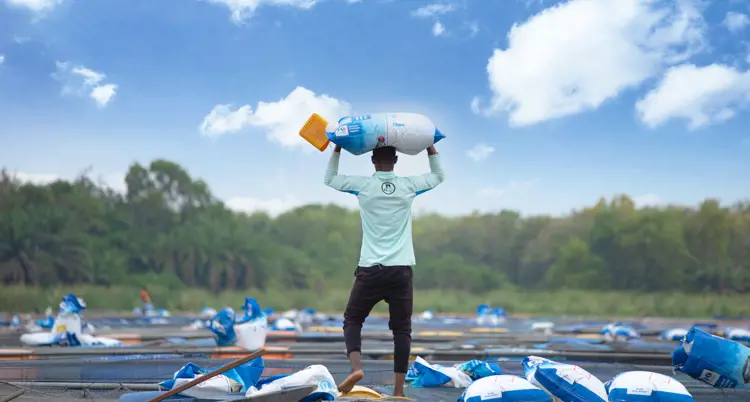Fish farming: Cage farming vs. pond farming
Pond and cage farming are two of the most common methods for rearing fish. Both have unique advantages and challenges, and the choice between them depends on water resources, farm management capabilities, fish species, and production goals.

What is cage farming?
Cage farming involves rearing fish in a floating cage placed in a body of water, such as a lake or river. These cages allow water to flow freely through the rearing area, ensuring natural oxygen exchange and waste removal.
Advantages of Cage Farming
-
Water buffering: Large bodies of water absorb excess nutrients from overfeeding, maintaining better water quality. River cages benefit from constant water flow.
-
Higher stocking densities: Better water quality allows for more fish to be stocked per unit area.
-
Better observation: Clear water in cages makes it easier to monitor fish feeding behavior and detect problems.
-
Reduced reproduction challenges: For tilapia, incomplete sex reversal is less problematic because there is no pond bottom for nesting and eggs fall through the net, conserving energy for growth.
Challenges of Cage Farming
-
Dependence on feed quality: There is no natural feed in cages, so nutritionally complete feed is essential.
-
Limited control of water quality: Issues cannot always be resolved easily.
-
Accessibility: Requires boats or walkways for access.
-
Maintenance: Nets must be checked regularly for holes, and algae growth must be managed to avoid reduced water flow.
What is Pond Farming?
Pond farming rears fish in earthen ponds, which are rectangular areas dug into the ground, typically 1.5–2m deep, filled with water, and replenished as needed from a fresh water source.
Advantages of Pond Farming
-
Natural feed production: Filter feeders like tilapia can feed on naturally occurring organisms, reducing feed conversion ratio (FCR) and lowering feed costs.
-
Shelter for certain species: Catfish feel more comfortable in ponds, resting on the bottom and finding shelter in green water conditions.
-
Flexibility in water management: Ponds allow water exchange, aeration, and the addition of supplements to manage ammonia, pH, and other parameters.
-
Accessibility: Ponds are often easier to access than cages and are not affected by currents or tides.
Challenges of Pond Farming
-
Good water source required: Essential for maintaining pond health.
-
Lower stocking densities: Natural limits compared to cages.
-
Organic matter accumulation: Leads to production of toxic substances such as ammonia, methane, and hydrogen sulfide.
-
Pathogen growth: Organic matter can foster harmful bacteria.
-
Eutrophication risks: Fertilizers may cause excessive algae growth or introduce pathogens.
-
Reproductive energy drain: Incomplete sex reversal in tilapia can lead to energy being diverted to reproduction rather than growth, and fry growth may cause additional management challenges.
Choosing between cage farming and pond farming requires careful consideration of environmental conditions, water resources, species requirements, and farm management capabilities. Cage farming offers higher stocking densities and ease of monitoring, while pond farming provides natural feeding advantages and more control over water quality, but requires careful water management and maintenance.
